Review by Wallace Wyss –
TITLE: Shelby and AC Cobra
AUTHOR: Brian Laban
FORMAT: Vertical
BINDING: Hardbound
PAGES: 208
PICTURES: Over 200, many in color
US Distributor: Motorbook Int.
PRICE: $35.96
I have seen this book as far back as 2015 and though there are many new books on the Cobra this one still is a good reference source–especially for those new to the story of the failed chicken farmer who became a world class racer and car builder.
Brian Laban brings the story of the AC Cobra up to date, necessary because there are more Cobras being made today than in the original Shelby era. He tells the story chronologically, of how in the early 1960s, an ambitious Texan, Carroll Shelby, dreamed of building a special kind of sports car, a marriage of European style with lusty, affordable American V8 power. He took his dream forward and he persuaded British sports car specialist AC Cars to build his car, and more importantly, talked a US industry giant — Ford Motor Co– into funding it.
The original production of the Cobra lasted just five years and encompassed barely a thousand cars built but, maybe because of the film Ford v. Ferrari there’s new interest in these cars. I think the new reading audience is more discerning and wants all the facts and pictures they can get.
Shelby and AC Cobra details the man behind the cars, the story of their development and engineering, their racing pedigree and what it’s like to own and drive one. Being a Shelby author myself, however, I noticed some small errors that could be corrected. For instance in running the 390 experimental big block in leaf spring car at Sebring it was John Morton driving when the engine blew, not Ken Miles who had smashed it the day before and spent the whole night rebuilding it.
Some of the terminology is wrong, for instance he calls a Ferrari the “250GTB,” I am sure he meant 250GT berlinetta. He also calls the roadsters that ran with bolt on hardtops at LeMans in ’63 “fastbacks” when, though they were fastbacks in side profile, the term is usually reserved for a fixed head coupe where the roof tapers down in a continuous line to the rear, as in the ’64 Cobra Daytona coupe.
Sometimes it’s sloppy editing like saying on page 180 “Mustang production was phased out of Shelby.” Shelby didn’t make the Mustangs. Ford did and sent them to Shelby to be built into Shelbys. An easy correction would be to say “Shelby Mustang production was phased out”. By the way he doesn’t mention it was because the airport kicked Shelby out, as technically airport property was for planes. Originally Shelby had his own airplanes there to look like he was doing something with planes but that was just to fool the airport authorities.
The author also chose some pictures that are not original era Cobras or may even be replicas–not good for a book that newcomers to the marque are buying for reference. On page 105 the black car with blue stripes has a side vent more like an early ’50s Ferrari race car vent than a Cobra, much taller than on the Cobra. On page 127 he shows four Webers. Though Webers were indeed offered as a racing option on the small blocks, the valve covers say Gurney Weslake which was a whole separate engine not offered by Shelby on production cars and deserves a box explaining it. Better to show it as Shelby sold it.
One completely wrong car pictured is the 427 Cobra prototype raced at Nassau in ’64 by Ken Miles. That car had a longer nose that lifted with the fenders, vents in
the nose and many other changes but is not the car pictured, instead he shows Dan Gerber’s more conventional 289 Cobra.
He also devotes whole pages (separate boxes) to cars that he doesn’t show a picture of, which leaves the reader wondering why it deserved a whole page but no picture.
Editorially he guides the reader through the aftermath of the Shelby Cobra era, which in real life had a lot of twists and turns. At one point he even says Shelbys plan to construct 427 chassis out of whole cloth and pass them off as leftover chassis was just plain crooked but ironically I did the same thing in my last Shelby book and now Jaguar and Aston Martin, among other automakers are remaking some of their last century classics. So what we two Cobra authors criticized is now accepted in the car world. Go figure.
And he neatly skips through the Dodge affiliation, the Series I disaster and the re-uniting with Ford. I’ve always wondered if a Shelby book should stop with the Sixties but I suppose many want to hear what Shelby did after the Sixties though I think a page devoted to picturing a Dodge GLH is a page wasted when it could have been a page devoted to a historic Cobra like a 427 race car actually in a race in period (not pictured in the whole book). That’s like doing a book on WWII fighters and not having a picture of a P51 Mustang!
And so it is–a capsule history of Shelby and the Cobras. Flawed but worth the price. I think one stop by the author at a photo archive in England could clean up the pictures situation for the next edition but this one will do in the meantime at this price.
Let us know what you think in the Comments.
THE REVIEWER: Wallace Wyss is doing work on Shelby cars but in the form of oil paintings of Cobras and GT40s. For a list of art write malibucarart@gmail.com
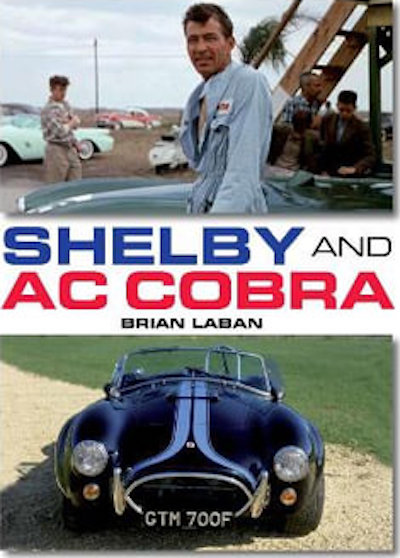
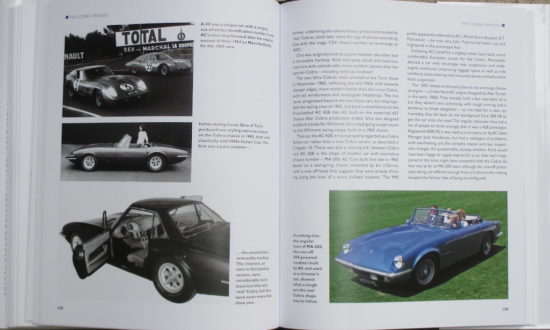
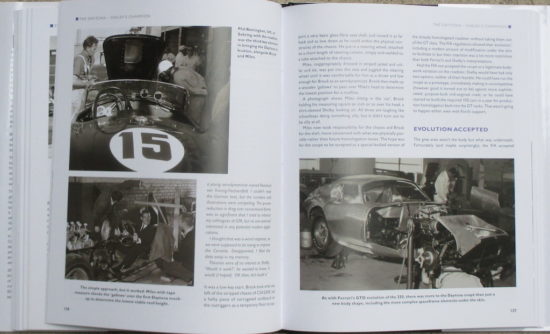
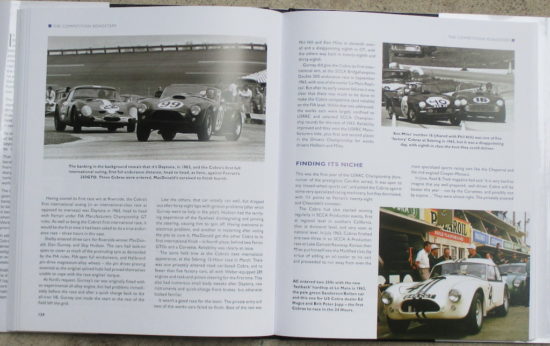
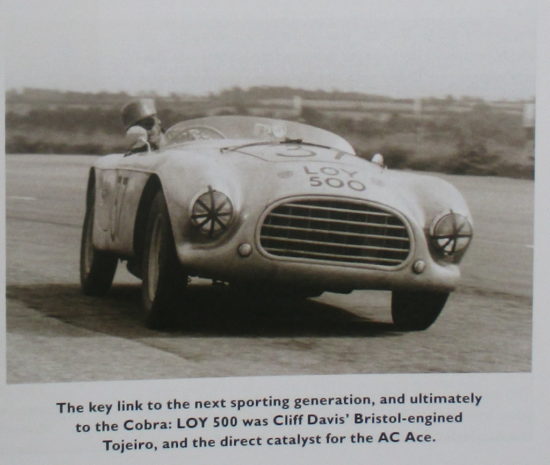
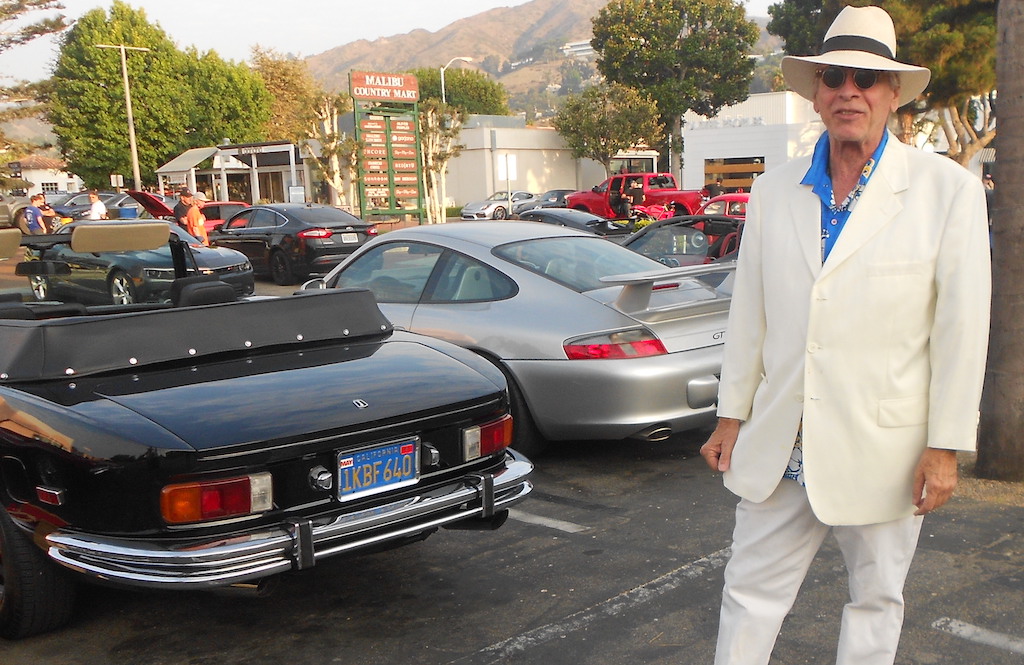
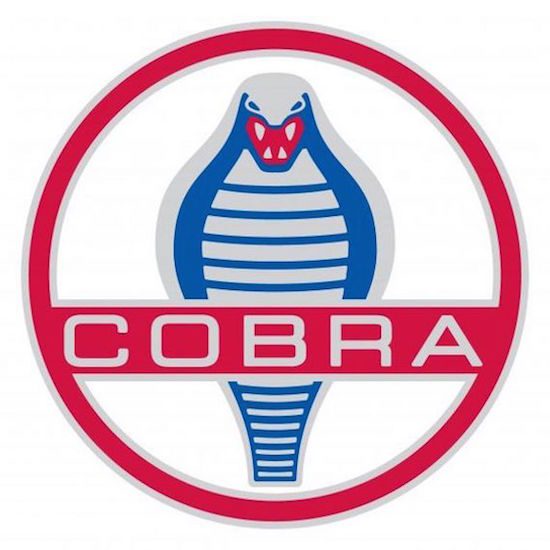
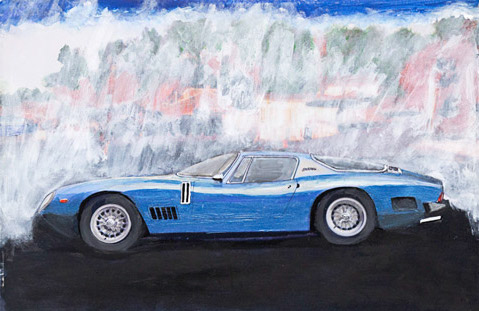

Wallace: Brit authors tend to NOT do enough research from American sources when writing about American cars. Yes, AC produced a few Cobras over in England, but the main story took place in the US of A. Mr. Laban is a very competent writer, but seems to have relied too much on British resources for his research on this Anglo=American hybrid.
Robb Northrup
Mr carrol shelby is the GREAtest hot rodder of all time.. Dannys shelbys kitchener ont. Canada
But that’s why I was hoping a British based author would tell more of the AC side than we usually hear over in the U.S.. I don’r know many fellow authors but I think , when half a dozen of us are all writing about one subject ,we should read each other’s rough drafts because otherwise we find they missed something. I read on rival author’s Pantera book in one sitting prior to publication but only found four 3-4 mistakes,
None of the Cobra authors, including me, have ever come across the Hurlock’s memos concerning Shelby. Would be entertaining to know what they really thought of the cheeky Texas gladhander.
Actually, we do know what the Hurlock’s thought of Shelby! F. Wilson McComb wrote about it in his book AC (Shelby) Cobra. Charles Hurlock was not all that impressed with Carrol, McComb stated on page 35, “Derek Hurlock, present boss of AC Cars PLC, (remember this was written in the early 80s,) backed Shelby’s plan from the start but now regrets the Texan’s denial of AC’s role in designing and developing the Cobra.”
Asked about removing the AC badges Derek said, “It’s true, he should have left our badges on. We were very fed up about it at the time, but it was typical of Carrol Shelby —– he was like that; it was one of his failings. So we said well, it’s the nature of the guy, and being British we let him get away with it.” In the first press release for the “Shelby AC Cobra Powered by Ford,” Carrol had nothing but over the top compliments for AC, but that changed as the Cobra became a bit of a success, then transformed into a mythical beast!
Does this book finally put to rest, the myth of CSX2000 having a Fairlane engine installed at AC for test purposes? We know, thanks to Barrie Bird, who purchased the engine from AC in the mid 70s, for his rebuild of CSX2003, when he disassembled it, it measured out as 4261cc or 260ci. In fairness, Ford did not tell Shelby or AC, that’s why CSX2000 was called Ace 3.6 in the AC books.
I have read that comment before though I don’t remember a book by McComb. I think the Hurlocks began to be annoyed with Shelby when they found out when the Cobras they had built arrived in Los Angeles, Shelby had somebody prying off the AC badges on the bonnet and installing instead a Cobra badge. I am not good at translating to metric but I understood Shelby was promised the 221 cu. in. V8 but by the time it was shipped they were already making the 260 cu. in. (available in the Falcon Sprint) and replaced it with that, and figured why not send him the larger one? I don’t know what engine was in the car when Shelby tested it in England.
To me the missing part of the story is how much Ford had to re-engineer the Cobra, but at least now I know Ford bought three of them early on which wasn’t in my books.
Ford did not redesign the Cobra! If you look at a AC 2.6 Straight six Ace, and then look at CSX2000, you will see where the Cobra came from. AC had to cant the steering box to clear the engine, put the fender flairs on to clear the Greyhound wheels with there wider off set. Even the 14 gauge tubing came from the Aceca. For some reason, Carrol wanted inboard rear brakes, even though AC said that was a bad idea, all later Cobra’s had outboard rear brakes, but not 12″. The fallow on production cars, had a shorter boot to clear the center deck mounted gas cap.
The computer designed 427 suspension was not used as it turns out. When the drawings turned up at AC Alan Turner found the suspension was in the middle of the driver and passenger! Ford again did not tell either Shelby or AC that the chassis was suppose to be longer! Phil Remington, who was on lone to AC, chalked it up to the 60s computers not being very good, which as it turned out, was not true. Derek Hurlock said of Phil, “a marvelous bloke and a real gentleman,” For some reason, Bob Negstadt, from Ford, who knew about the longer wheel base, never said anything after arriving at AC. He just rolled up his sleeves and helped Turner make the suspension work. Those two men, do not get the credit they deserve!
In short, Ford did not redesign the Cobra from front to back on any of the models, that was done at AC. Phil did send over some race developed improvements, which did help the Cobra.
I will never understand guys like Shelby? A WWII pilot, an unbelievable great driver, and started a mythical beast in the Cobra, plus other later cars, but he always had to take more credit, as if his real life accomplishments were not enough for 10 men!
Well, there is that old saying “Success has many fathers and failure has none.” So i think this is a case of each group that worked on the Cobra taking credit for its eventual success. Too bad so many people have passed who could tell us more, like Negstadt. As far as Shelby taking what some would call “outsize” credit, if you look at the vaulted status of Elon Musk, you see how he is mostly taking credit for everything good that happens in his businesses(I think in a recent day he made several billion and became the richest man on earth). He perceived early on that the investing public likes a singular hero riding in on a white horse, basically using Shelby’s method of promotion–everything good that happens is due to his planning.